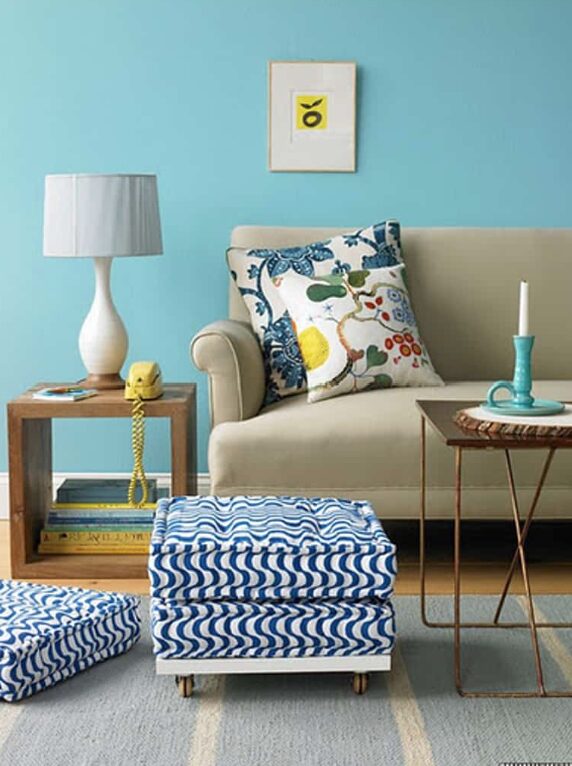If you’ve ever spent hours on Pinterest looking for ideas to renovate your space (I can’t be the only one), you might have missed something important.
When you look at those amazing pictures, you can see that a lot of things went into making a cohesive look, but one of the often overlooked elements is accent colors.
Vibrant pops of color that bring everything together can add depth and “personality” to a space, helping you to create a “signature look” that’s all yours.
And while it might seem like all you need to do is toss in some different colors here and there, if you get the balance between colors wrong it can keep you from getting the look you want.
To get the absolute best results when using accent colors, follow design tips shared by the pros.
In this blog, you’ll learn how to seamlessly incorporate accent colors into your home’s decor without breaking a sweat.
The Magic of Color Psychology
You know it when you feel it…that calm that comes over you when you walk into a living room painted in cool tones of green or blue. That’s color psychology at work!
Colors influence our emotions and, by extension, our behavior; accent colors are no exception.
Consider red, for example. It adds energy to a space, while blue is calming. Like yellow? Its bright, sunny shade can bring a smile to even the grumpiest among us!
But here’s the trick to not overdoing it. The same color can have different effects depending on the room it’s used in. For example, red is a great, energizing color for a home office, but it could be too much in your bedroom, interfering with your ability to relax.
Picking the Perfect Accent Color
Choosing an accent color isn’t just about picking your favorite hue and slapping it on the wall. There’s a bit of strategy involved:
1. Consider your existing color palette.
Your accent color should go with the colors already in your space.
2. Think about what you’re using the room for.
A calming blue or green might be perfect for a bedroom, while an invigorating orange could be just what you need for a workout room.
3. Remember lighting!
Colors can look drastically different under natural light versus artificial light. Always test your colors in different lighting conditions before committing.
Where and How to Use Them
Now that we’ve covered the theory let’s get down to brass tacks. How can you use accent colors in your home?
Here are some tried-and-true ways to use accent colors:
1. The Accent Wall
It’s a classic design choice for a good reason…it just works! An accent wall can create a focal point and add depth to a room.
2. Furniture and Decor:
Imagine colorful cushions, eye-catching rugs, or a statement piece of furniture like an antique wingback chair covered in Victorian roses.
3. Accessories:
Small touches like vases, lamps, or picture frames can add pops of color without overwhelming the space.
Remember, the key is balance. You want your accent color to enhance your space, not dominate it.
Common Accent Color Mistakes (And How to Avoid Them)
Even the pros make mistakes sometimes. Here are a few common pitfalls to watch out for:
1. Over-accessorizing
Too much of a good thing can lead to visual chaos. Use your accent color sparingly for the best look.
2. Ignoring the overall color scheme
Your accent color needs to complement your existing palette, not fight against it.
3. Forgetting about psychology
Remember, colors affect mood. Ensure your chosen accent color aligns with the vibe you’re going for in each room.
Finally, remember that interior design is all about expressing your personality and creating a space that feels like you. Don’t be afraid to experiment with different colors and see what speaks to you.
How to Choose the Best Accent Wall


